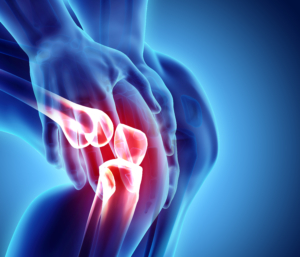Osteoarthritis and Seating – What to Consider
In the UK around 8.75 million people have osteoarthritis
Osteoarthritis is a common condition that causes pain and inflammation in a joint. It mainly affects those over the age of 45 and a third of over 45’s have some symptoms. However, it can occur at any age as a result of an injury or another joint-related condition.
Cause
In osteoarthritis, the joint cartilage (connective tissue, that provides a cushion in the joint space) between the bones gradually erodes, causing bone in the joints to rub together. This can then lead to swelling and the formation of bony spurs, called osteophytes.

The joints that are most commonly affected are those in the hips, knees and spine.
Osteoarthritis is more prevalent in the older population, women, people who are significantly overweight, those with significant injuries from previous activities and jobs, where there is repetitive stress on certain joints.
Symptoms
- Pain.
- Stiffness, leading to reduced flexibility.
- Muscle weakness.
- Swelling.
- Deformed joints.
- Reduced range of motion and loss of use of the joint.
- Cracking and creaking of bones and joints.
- Sleep problems, usually associated with pain.
Seating
Seating someone with Osteoarthritis needs to take into account the deteriorating nature of the condition. However the most important piece of information to be aware of is the treatment proposed by the medical team as this will have an impact on long-term provision.
Due to the deteriorating nature of the conditions and the fact that the conditions affect each person in a unique way, there are no set rules about suitable seating. However the chair should enable the user to:
- Be comfortable.
- Be Seated in a position that promotes good posture.
- Reduce any pressure damage from sitting for prolonged periods
- Continue to allow them to carry out normal activities whilst in a seated position
- Want to use the chair, meeting their aesthetic needs and fitting in with their décor.
Considerations when looking for a suitable chair:
- The height of the seat must allow the user to sit with their feet flat on the floor. Always remember to ask whether a client uses slippers or not as this will affect height.
- The seat width needs to provide enough support to prevent a user slumping to either side in the chair.
- The seat depth should be long enough to support the femur but not too long to cause pressure problems behind the knees.
- The arm rests should be at a suitable height to enable a resting position that does not push the shoulders upwards and far enough forward to support effective sit to stand transfers.
- The back should be high enough to support the upper limb and avoid pressure points on the upper limbs large joints.
- The fabrics and any comfort padding should be discussed with the client to make sure it meets their needs.
- If a mechanism with a handset is recommended, ensure that its one that the user can operate without any pain or discomfort.